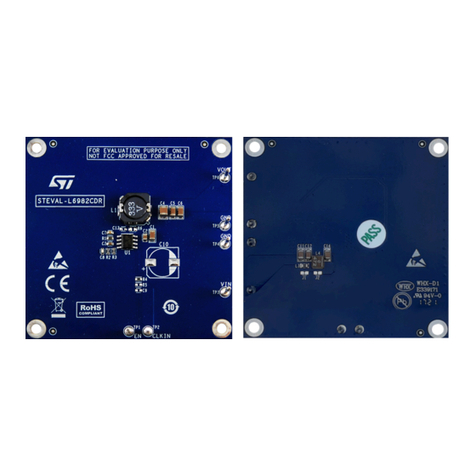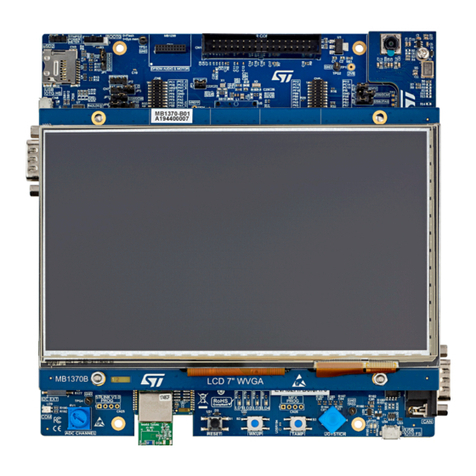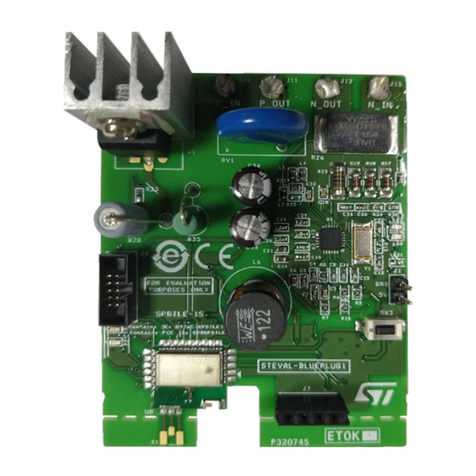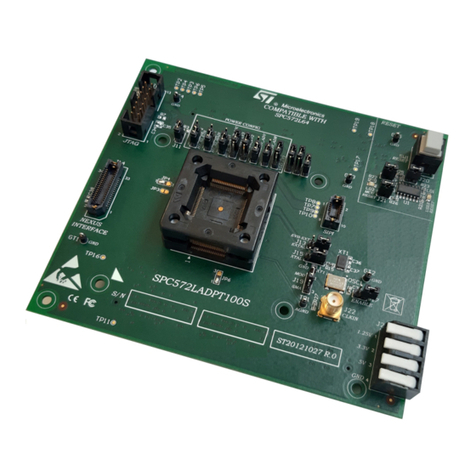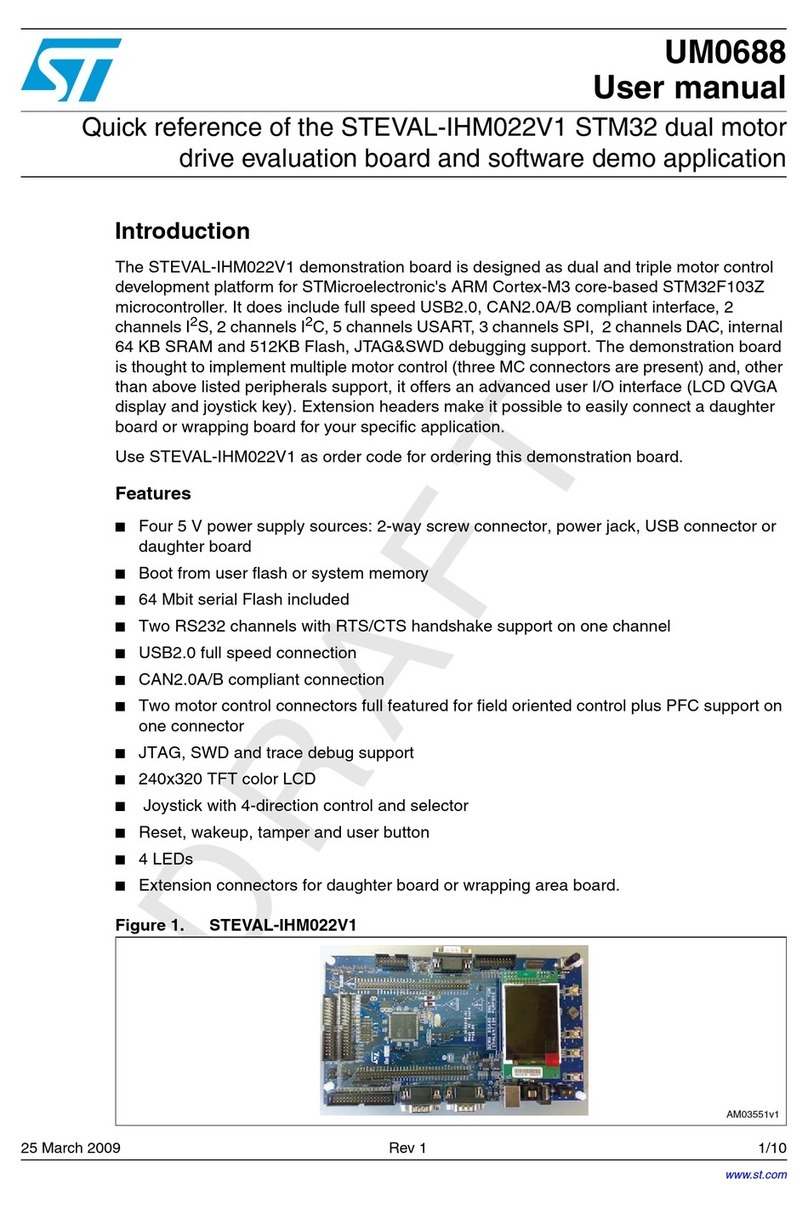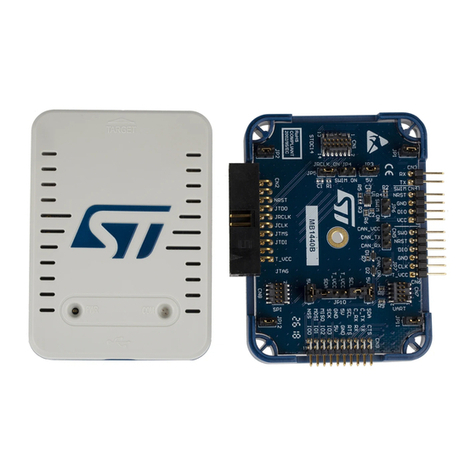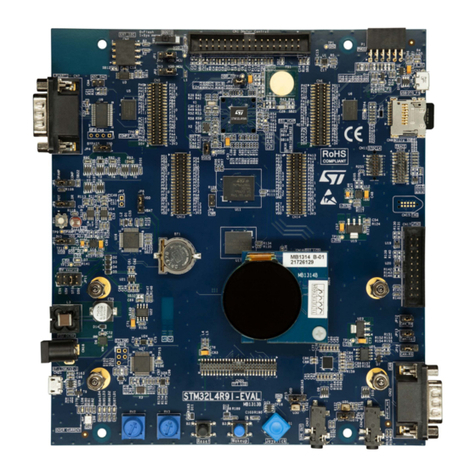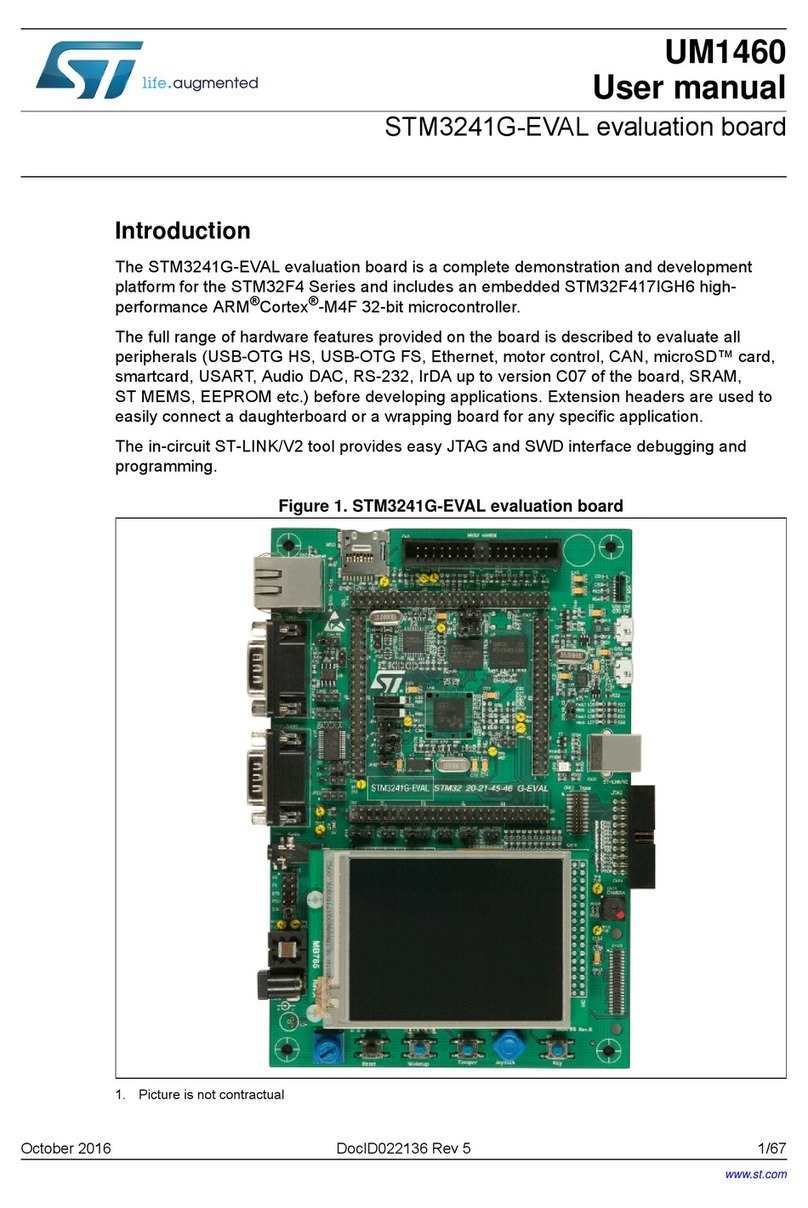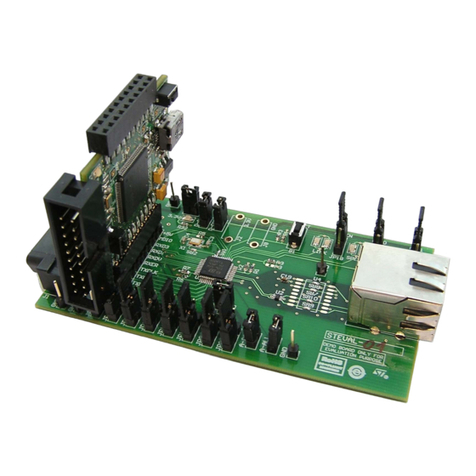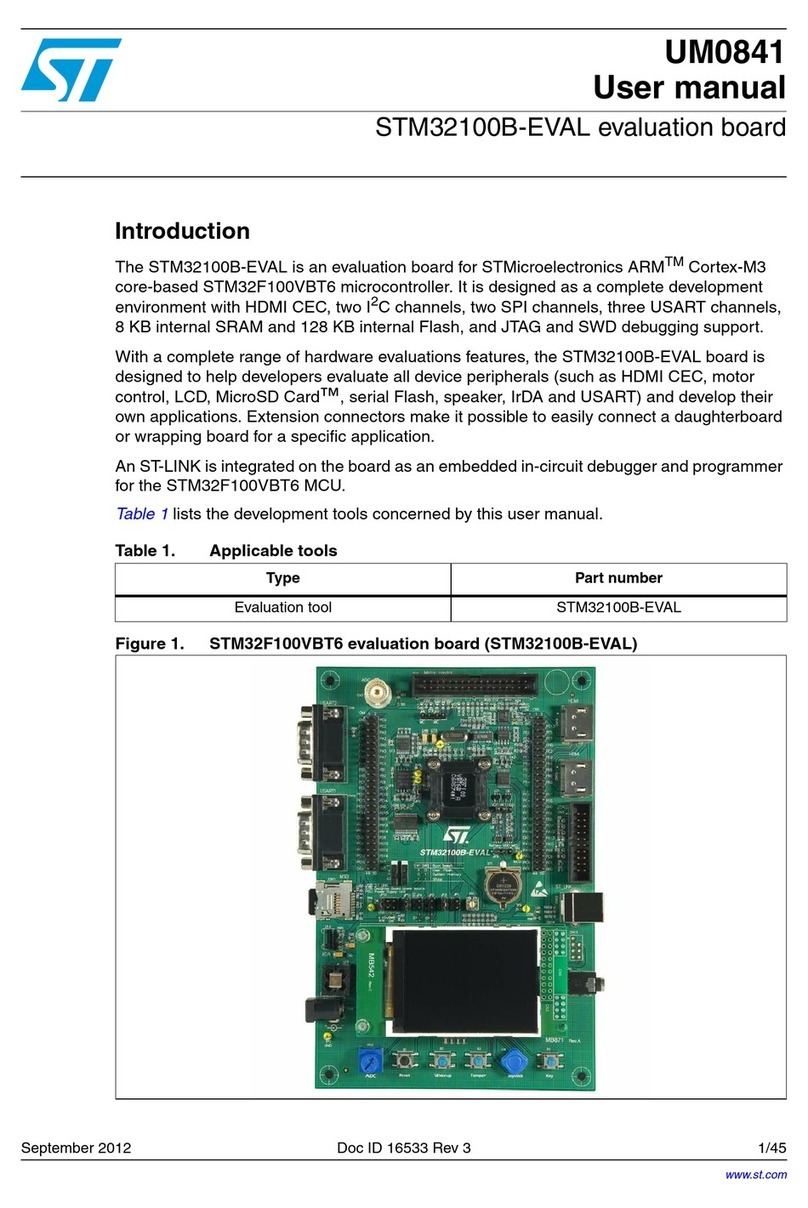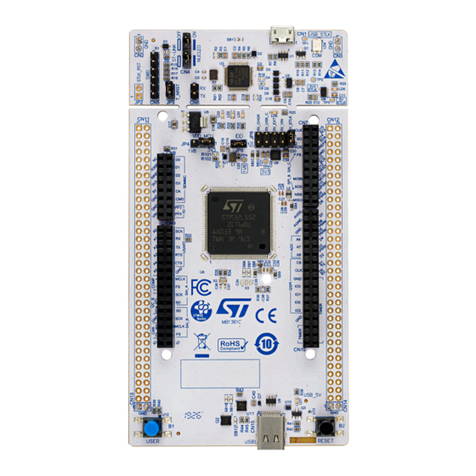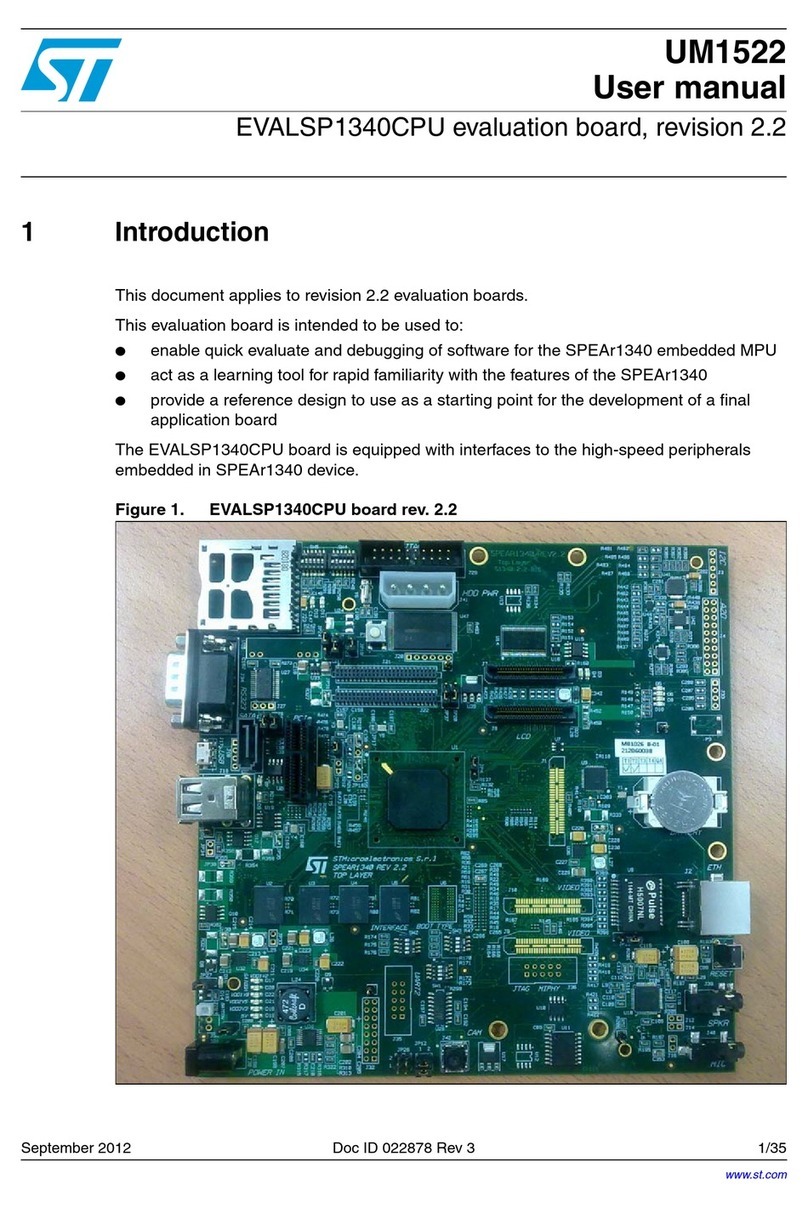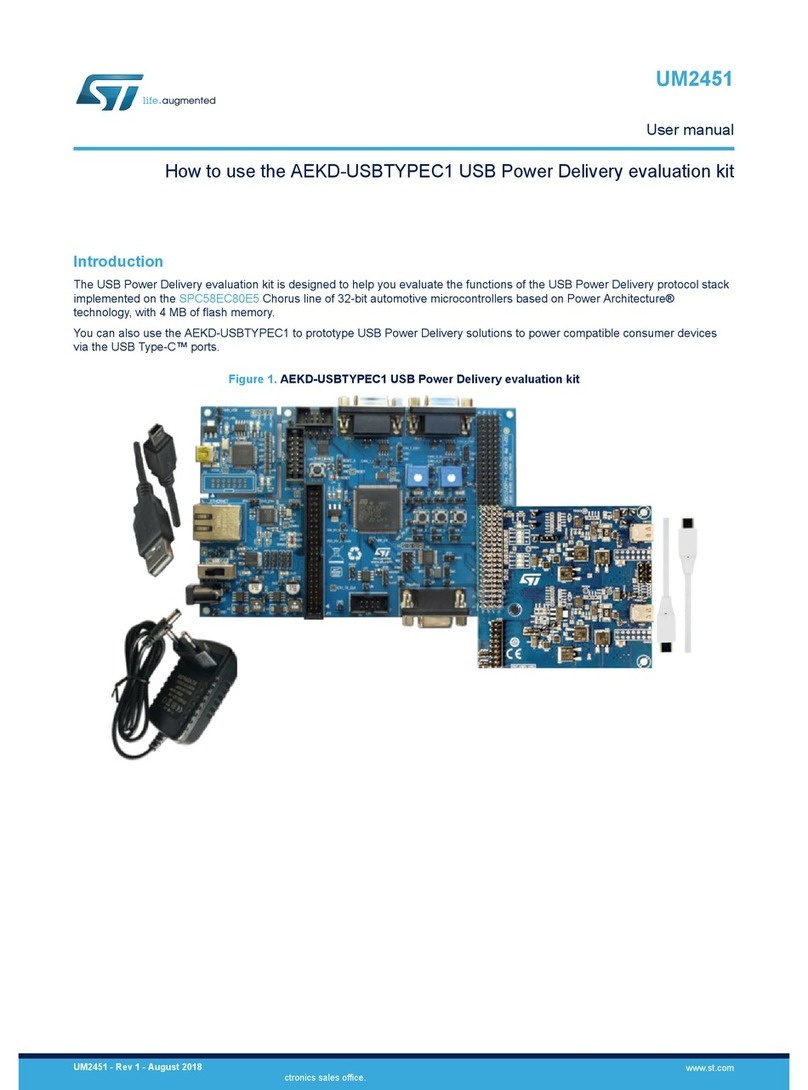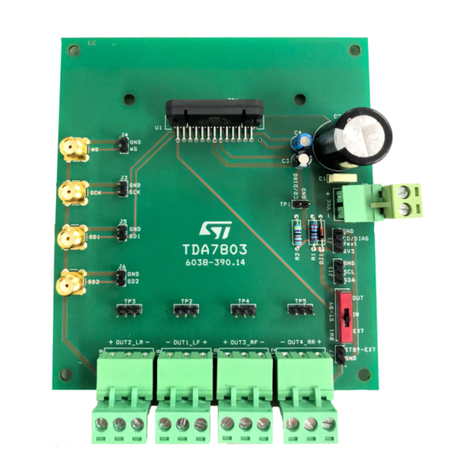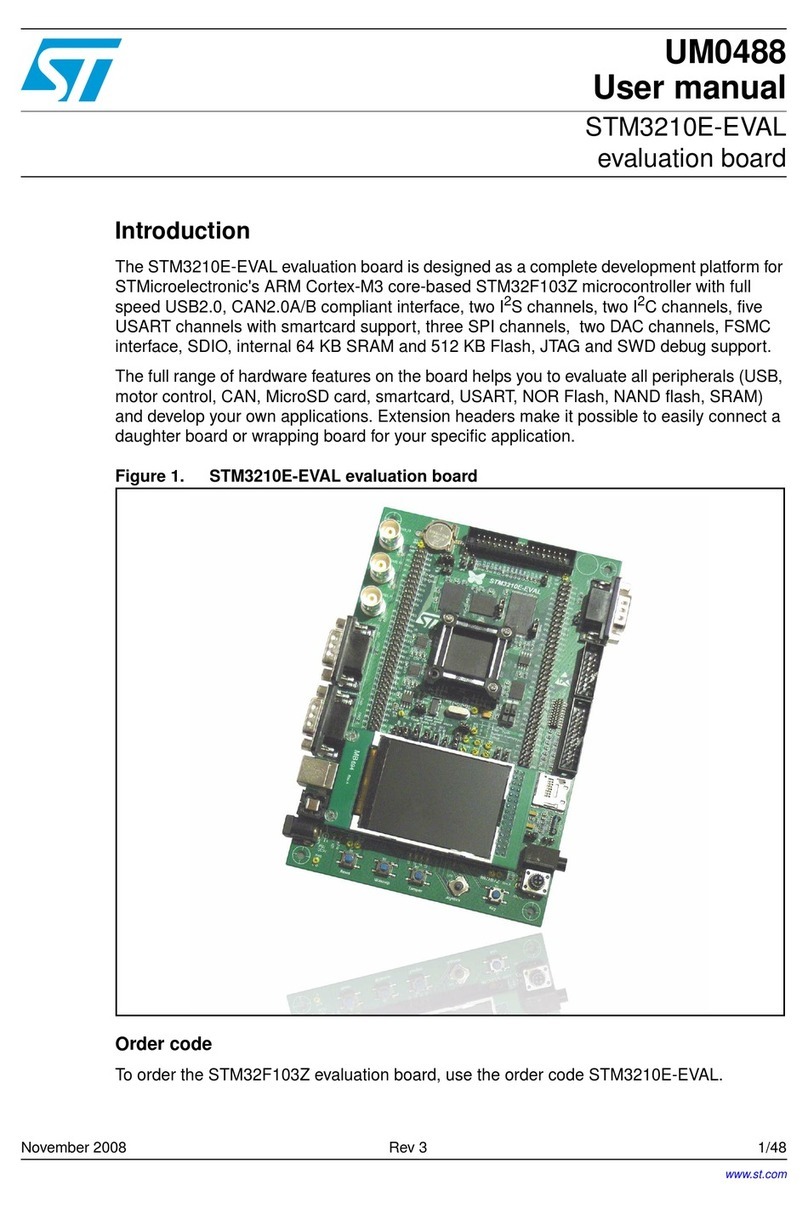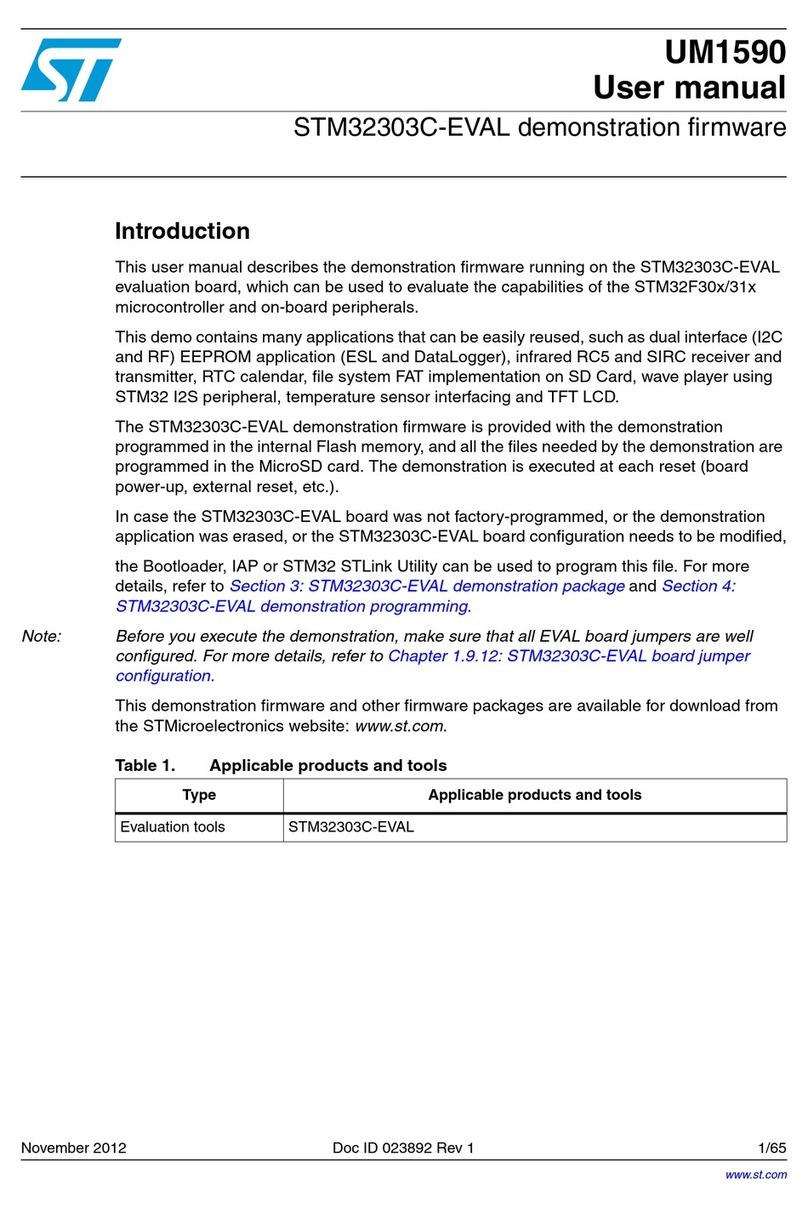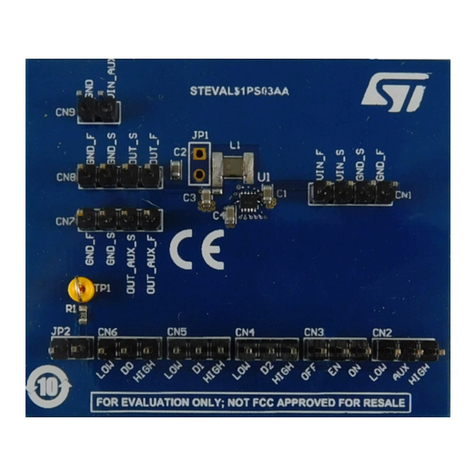
List of tables UM2248
6/87 DocID030791 Rev 2
List of tables
Table 1. Setting of configuration elements for trace connector CN12 . . . . . . . . . . . . . . . . . . . . . . . 19
Table 2. Power supply related jumpers settings . . . . . . . . . . . . . . . . . . . . . . . . . . . . . . . . . . . . . . . . 21
Table 3. X1 crystal related solder bridge settings. . . . . . . . . . . . . . . . . . . . . . . . . . . . . . . . . . . . . . . 22
Table 4. X2 crystal related solder bridge settings. . . . . . . . . . . . . . . . . . . . . . . . . . . . . . . . . . . . . . . 23
Table 5. Boot selection switch . . . . . . . . . . . . . . . . . . . . . . . . . . . . . . . . . . . . . . . . . . . . . . . . . . . . . 24
Table 6. Digital microphone-related jumper settings . . . . . . . . . . . . . . . . . . . . . . . . . . . . . . . . . . . . 25
Table 7. Motor-control terminal and function assignment . . . . . . . . . . . . . . . . . . . . . . . . . . . . . . . . . 28
Table 8. CAN related jumpers . . . . . . . . . . . . . . . . . . . . . . . . . . . . . . . . . . . . . . . . . . . . . . . . . . . . . 33
Table 9. Port assignment for control of physical input devices. . . . . . . . . . . . . . . . . . . . . . . . . . . . . 35
Table 10. Configuration elements related with OpAmp1 . . . . . . . . . . . . . . . . . . . . . . . . . . . . . . . . . . 36
Table 11. Configuration elements related with Comp2 . . . . . . . . . . . . . . . . . . . . . . . . . . . . . . . . . . . . 36
Table 12. SRAM chip select configuration . . . . . . . . . . . . . . . . . . . . . . . . . . . . . . . . . . . . . . . . . . . . . 38
Table 13. NOR Flash memory related jumper . . . . . . . . . . . . . . . . . . . . . . . . . . . . . . . . . . . . . . . . . . 38
Table 14. Configuration elements related with Octo-SPI Flash device. . . . . . . . . . . . . . . . . . . . . . . . 39
Table 15. Touch-sensing-related configuration elements . . . . . . . . . . . . . . . . . . . . . . . . . . . . . . . . . . 41
Table 16. MFX signals . . . . . . . . . . . . . . . . . . . . . . . . . . . . . . . . . . . . . . . . . . . . . . . . . . . . . . . . . . . . 42
Table 17. IDD measurement related jumper setting . . . . . . . . . . . . . . . . . . . . . . . . . . . . . . . . . . . . . . 43
Table 18. DSI display module connector CN16 . . . . . . . . . . . . . . . . . . . . . . . . . . . . . . . . . . . . . . . . . 43
Table 19. TFT LCD module connector CN20 . . . . . . . . . . . . . . . . . . . . . . . . . . . . . . . . . . . . . . . . . . . 45
Table 20. PMOD connector P1. . . . . . . . . . . . . . . . . . . . . . . . . . . . . . . . . . . . . . . . . . . . . . . . . . . . . . 46
Table 21. MB1314 board connector CN1 pin function description . . . . . . . . . . . . . . . . . . . . . . . . . . . 46
Table 22. MB1315 board connector CN1 pin function description . . . . . . . . . . . . . . . . . . . . . . . . . . . 47
Table 23. Motor-control connector CN1 . . . . . . . . . . . . . . . . . . . . . . . . . . . . . . . . . . . . . . . . . . . . . . . 49
Table 24. EXT_I2C connector CN2 . . . . . . . . . . . . . . . . . . . . . . . . . . . . . . . . . . . . . . . . . . . . . . . . . . 50
Table 25. USB OTG FS Micro-AB connector CN3 . . . . . . . . . . . . . . . . . . . . . . . . . . . . . . . . . . . . . . . 50
Table 26. Analog input-output connector CN4 . . . . . . . . . . . . . . . . . . . . . . . . . . . . . . . . . . . . . . . . . . 51
Table 27. Daughter board extension connector CN5 . . . . . . . . . . . . . . . . . . . . . . . . . . . . . . . . . . . . . 51
Table 28. Daughter board extension connector CN6 . . . . . . . . . . . . . . . . . . . . . . . . . . . . . . . . . . . . . 52
Table 29. Daughter board extension connector CN13 . . . . . . . . . . . . . . . . . . . . . . . . . . . . . . . . . . . . 54
Table 30. Daughter board extension connector CN14 . . . . . . . . . . . . . . . . . . . . . . . . . . . . . . . . . . . . 55
Table 31. RS232 D-sub male connector. . . . . . . . . . . . . . . . . . . . . . . . . . . . . . . . . . . . . . . . . . . . . . . 57
Table 32. microSD connector CN8 . . . . . . . . . . . . . . . . . . . . . . . . . . . . . . . . . . . . . . . . . . . . . . . . . . . 58
Table 33. STDC14 debugging connector CN11 . . . . . . . . . . . . . . . . . . . . . . . . . . . . . . . . . . . . . . . . . 58
Table 34. Trace debugging connector CN12 . . . . . . . . . . . . . . . . . . . . . . . . . . . . . . . . . . . . . . . . . . . 59
Table 35. TAG debugging connector CN15 . . . . . . . . . . . . . . . . . . . . . . . . . . . . . . . . . . . . . . . . . . . . 59
Table 36. JTAG/SWD debugging connector CN17 . . . . . . . . . . . . . . . . . . . . . . . . . . . . . . . . . . . . . . 60
Table 37. USB Micro-B connector CN21 (front view) . . . . . . . . . . . . . . . . . . . . . . . . . . . . . . . . . . . . . 61
Table 38. CAN D-type 9-pin male connector CN22 . . . . . . . . . . . . . . . . . . . . . . . . . . . . . . . . . . . . . . 62
Table 39. STM32L4R9I-EVAL I/O assignment . . . . . . . . . . . . . . . . . . . . . . . . . . . . . . . . . . . . . . . . . . 80
Table 40. Document revision history . . . . . . . . . . . . . . . . . . . . . . . . . . . . . . . . . . . . . . . . . . . . . . . . . 86
